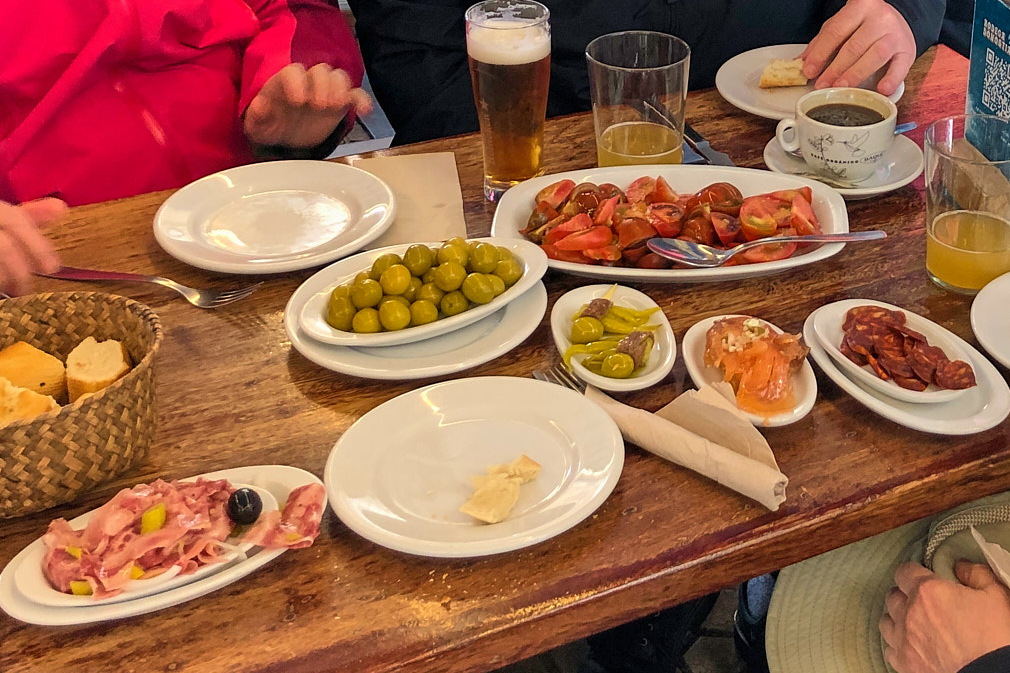Pintxos are small portions of food, called tapas in other parts of Spain. You can have hot or cold pintxos. Some are on skewers, others on French bread. They’re often inexpensive, because the bar makes most of its profit on alcoholic beverages. Here’s a spread of pintxos we got at one of the oldest bars in San Sebastian.

At the far left is pig snouts. Julian ordered this on a dare. It was a bit chewier than ham, but just as tasty. The small plate in the middle holds two gildas, the classic pintxo of green olive, anchovy, and guindilla peppers on a skewer. To the right of the gildas are two open-face salmon pintxo. This was more like lox. To the far right is chorizo, the classic cured Spanish pork sausage flavored with a good bit of paprika. [Do not confuse Spanish chorizo with its Mexican cousin. The latter is more like Italian sausage links.] The tomato salad at the top of the photo was on the tapas menu, presumably so some vegetable could get served. Pintxos tend to be meat- or fish-based and often deep-fried.
Here’s a more limited pintxo menu from a restaurant near our rental apartment. It’s also a bit more upscale.

I ordered the mejillon (mussel) and rissotto with mushrooms. Julian had the foie (liver) with applesauce. All were excellent.
As I said in the previous post, pintxos are often consumed at successive bars with alcohol. However, having pintxos at a single place is acceptable if you don’t want to do much drinking or if your kids are with you. Think of pintxos as the Basque equivalent of dim sum.

Recent Comments